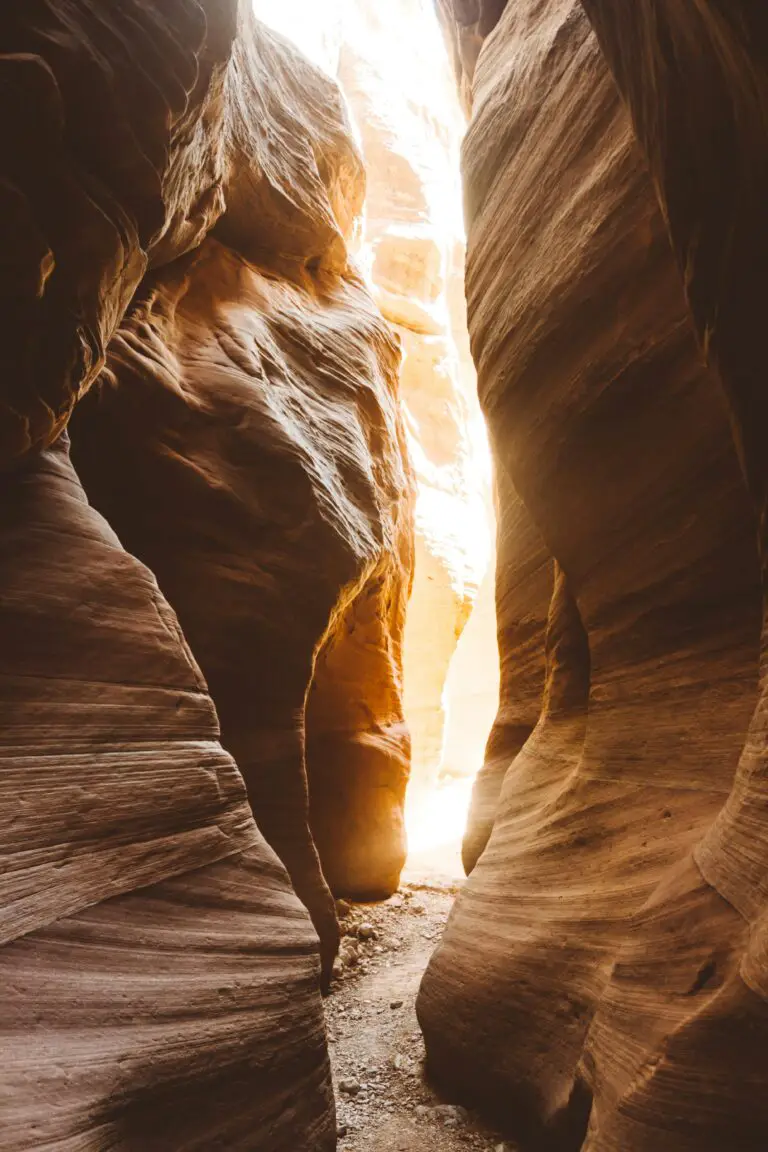Introduction to North American Sedums
Imagine walking through a flourishing garden, where the unsung heroes of the plant world nestle in crevices and bask on sun-drenched rocks. These hardy troopers, the sedums, are ambassadors of the stunning diversity that North America’s flora offers. Amidst this botanical tapestry, native sedums stand out for their resilience, offering a kaleidoscope of greens, reds, and yellows, synchronized with the seasons. But why should we care about these native succulents, you might wonder?
Native plant species, like the sedums we find across North America, are vital pieces of our ecological puzzle. Born and bred in this land, they’ve developed special relationships with the local wildlife, supporting everything from bees to butterflies. It’s a feast for the eyes and a banquet for nature! Cultivating these plants, we not only nod to nature’s wisdom but also nurture a little piece of North America’s essence right in our backyards. Isn’t that something to marvel at?
It’s essential to recognize that embracing native sedums isn’t just about aesthetics; it’s about preserving the intricate web of life that thrives alongside these succulents. Their ecological significance can’t be overstated—they are the unsung heroes working the ground beneath our feet, stabilizing soils, conserving water, and creating habitats. Each sedum has a special role to play in the wellbeing of our environment, and by understanding and planting them, we become active participants in this grand natural symphony.
But don’t take my word for it! Let’s dive into an engaging visual journey and witness these captivating succulents in their full glory.
So as we continue exploring which sedums are native to this great continent, remember that we’re not just talking about plants. We’re delving into living legacies, each with a story etched into the very soil they enrich. Embrace these natural treasures, and you’ll be stepping into a world where every leaf and bloom unfolds a chapter of North America’s native narrative.
Discovering the Diversity of Native Sedums
Imagine this: a lush garden that hardly ever thirsts, stays green all year round, and erupts in a kaleidoscope of colors with the seasons. Welcome to the world of sedums, North America’s unsung heroes of the plant kingdom! These succulent darlings aren’t just about good looks; they’re survival experts, too.
Stretching from the balmy borders of Mexico to the crisp edges of Canada, sedum species pepper the continent with their eclectic charm. Take, for instance, the Sedum lanceolatum, a hardy inhabitant of the Rocky Mountains. It’s like a mountaineer in plant form, unbothered by rocky soils and thin air. Or how about the Sedum ternatum, spreading its forest-loving foliage across the Eastern US? These guys are the true mountaineers and forest dwellers of the succulent world.
But wait! The party doesn’t end there. Venture into the dry heat of Arizona, and you’ll stumble upon the Sedum stelliforme with its star-shaped leaves, a real-deal sun worshipper. It’s just one example of how these succulents have adapted to every nook and cranny of our continent.
Don’t just take our word for it. Check out this video for some visual proof and tips on how to bring these native wonders into your own backyard.
If you’re looking to dip your toes into the succulent world, sedums are your best bet. Low maintenance and high impact, they’re the gateway to greening up your life. And when you’re ready to dive deeper, why not explore the finer details of succulent care? With each variety comes a new set of fascinating traits and care tips to discover — because who doesn’t enjoy a bit of plant pampering?
So, when you’re ruminating over which green companions to usher into your garden next, think of North America’s native sedums. They’re more than just pretty plants; they’re a study in adaptation and beauty, a narrative rooted deep in the soil of our home turf.
Unique Habitats of North American Sedums
Delve into the world of North American sedums, and you’ll find these resilient succulents dotted across a spectrum of extraordinary habitats. With the ability to colonize terrains that range from the baking sands of arid deserts to the precarious ledges of mountainous rocky outcrops, sedums have adapted unique survival strategies tailored to each challenging environment. But what’s their secret sauce for not just surviving but thriving?

Casting a glance over the scorching deserts, you might catch a glimpse of sedum species basking in the intense sunlight. Their fleshy leaves store precious water, revealing an evolutionary masterpiece of drought resistance. Take Sedum ternatum, for instance, which has carved out a niche from the Appalachian regions all the way to the Midwest, showcasing its robust nature.
Moving to the opposite end of the spectrum, in the cool shade of forested areas, sedums exhibit a different kind of moxie. Here, species like Sedum glaucophyllum leverage their ability to tolerate lower light levels and still perform photosynthetic marvels. It’s in these leafy retreats where the lush green tapestries of native sedums add a stroke of verdant brilliance under the canopy’s dappled sunlight.
For those eager to cultivate their own slice of wilderness at home, learning about sedum care is a fantastic way to start. It’s not merely about emulating these habitats but understanding the intrinsic resilience woven into the very DNA of these succulents. From the seductive allure of desert-like conditions to the cool whispers of a forest floor, sedums thrive because each habitat offers something unique: a test, a trial, and an opportunity for these remarkable plants to demonstrate their full glory.
Popular North American Sedums for Your Garden
If you’re on the hunt for resilient and attractive plants that are genuinely at home in North American locales, look no further than sedums, or stonecrops. These succulents—not just popular but native too—are treasured for their diverse appearances, drought-resistant powers, and the ease with which they mingle in garden landscapes. Let’s take a closer look at some standout sedums that will not just survive but thrive in your garden.
One such example is Sedum spectabile, a showy plant that dazzles with its winter-hardy spirit and clusters of pink flowers that electrify the garden late in the season. Originating from the east coast, this sedum is perfect for border designs. Picture a splash of pink against the lush greens of your backyard—this is the brilliance of native sedums in action.
Take Sedum reflexum, for instance, renowned for its needle-like foliage and yellow blooms. It’s a rugged ground cover that spreads joy, not just across soil but in rock gardens and along slopes where they hold the soil firmly in their grasp. A marvel of adaptation, these plants are a testament to Mother Nature’s ingenuity.

Don’t overlook the stonecrop Sedum spathulifolium with its spoon-shaped, silver leaves and sunny yellow flowers. Native to the western regions, this sedum is a sterling pick for container gardening, softening the edges with its cascading habit, and requires minimal care to add that sparkle to your patio or balcony.
But it’s not just about good looks. North American sedums play a crucial role in attracting pollinators and providing them with much-needed nectar. Just imagine the sight of butterflies and bees flitting from one succulent flower to another, animating your garden with life and ensuring the health of your local ecosystem.
When talking tips for growing these native beauties, remember that sedums are the epitome of low-maintenance. They yearn for sunshine but will tolerate some shade, demand well-drained soil, and will happily make do with the occasional rain shower or watering. In other words, if you’re seeking a no-fuss gardening adventure with a reward of stunning visuals and eco-benefits, native North American sedums are your perfect companions.
“`html
Conservation Efforts for Native Sedums
Roll up your sleeves, planthood pals! It’s time to dive into the green, gritty details of saving North America’s native sedums. These succulent darlings are more than just garden garnish; they’re vital pieces of local ecosystems. But wait, why the hubbub over a handful of hardy plants? Let me paint you a picture of the peril they face.
You see, native sedums, those resilient rockstars of the plant kingdom, face threats like habitat loss, invasive species, and climate change. And it’s our job to shield them from these ecological curveballs. This isn’t just about preserving pretty plants; it’s a crucial crusade to keep our ecosystems balanced and biodiverse. Conservation biology isn’t just a trendy topic; it’s a call to action.
Picture this: a meadow brimming with a variety of sedums – a smorgasbord of shapes, sizes, and shades of green. These aren’t imports from afar; they’re North America’s own, specialized to survive the continent’s diverse climates. But their very specialty makes them vulnerable. When their unique habitats are compromised – whether by urban sprawl, pollution, or the trampling feet of humans and our four-legged companions – we risk losing them, and the charm they add to our natural tapestry.
Thankfully, there are real-life heroes in this saga. Conservationists and botanic gardens are the vanguards at the frontlines, waging war on weeds and championing native flora. They run programs that literally give these sedums a fighting chance, cultivating them in safe havens and reintroducing them to their natural homes. They don’t wear capes, but they do wield shovels – and science.
For example, organizations across North America have banded together to turn the tides on plant extinction, creating seed banks and protective legislation to safeguard these succulent sensations. Innovative strategies, like creating habitats that mimic the natural ones being lost, are taking root – and it’s making a difference. These efforts are detailed on many , offering a glimpse into the multifaceted approach to plant conservation.
But the journey doesn’t end with the experts; it involves you, too. By choosing native sedums for your gardens and green spaces, you’re not just making a style statement. You’re casting a vote for biodiversity, for the environment, for the underdog plants buckling under the weight of ecological pressures. So, let’s rally behind these plucky plants and give them the fighting chance they deserve!
“`
The Role of Native Sedums in Ecosystems
Imagine a hummingbird flitting from flower to flower, or a bumblebee buzzing around a vibrant succulent. These are not just picturesque scenes; they are vital interactions in nature’s complex web. Native sedums, those fleshy-leaved plants often synonymous with rugged beauty and resilience, play a more significant role in ecosystems across North America than one might initially believe.
Let’s venture into the ecological niche of native sedums. Nestled in diverse habitats, from rocky crevices dotting the Badlands to dry, sun-scorched slopes of the Antelope Valley, these succulents are a beacon of life. They excel in areas where many plants would falter, thus contributing to local biodiversity by filling in the gaps of ecological tapestries.

It’s not just about survival against the odds, though. Native sedums’ fleshy leaves and bright flowers are more than a visual treat. They are a hub for pollinators. The varied shapes and sizes of sedum flowers cater to a plethora of pollinators, each with their unique foraging preferences. Be it butterflies delicately landing on dainty petals or bees tenaciously diving into the heart of the bloom, sedums offer a smorgasbord for these crucial creatures.
Furthermore, sedums intertwine with the existence of various wildlife. Small animals use their robust structures for shelter, while birds might find their seeds a nourishing snack during migration. It’s this intimate intertwining with the local fauna that underscores the importance of preserving native species within their home ranges.
So, when you next see a sedum, take a moment to observe. Notice the life buzzing around it and consider the invisible threads linking this unassuming plant to the world around it – a native cornerstone supporting myriad forms of life in North America’s rich and varied ecosystems.
Frequently Asked Questions
When it comes to the lush world of succulents, few are as versatile and resilient as the sedums native to North America. But with such a rich variety, it can be quite a puzzle to pinpoint which ones are truly homegrown on this continent. That’s why we’ve put together this section, to tackle the FAQs that every green thumb and succulent enthusiast might have!
Identifying Native Sedums
Ever stumbled upon a sedum and wondered if it’s a local resident or a global traveler? Identifying native North American sedums can sometimes be as easy as spotting a cardinal in your backyard. These succulents often have a certain hardiness, adapting to the diverse climates across the continent. Take the trusty Sedum lanceolatum, for instance, thriving from the alpine heights of the Rockies right down to the plains. Or Sedum ternatum, often found cascading by woodland streams with its star-shaped white blooms. They’re not just survivors; they’re native emblems of the landscape!
Where to Find Them
On a quest to find these native gems? You don’t have to embark on a Lewis and Clark expedition. Many of our native sedums enjoy sunbathing on rocky outcrops or nestling in the nooks of dry stone walls. Others, like the charming Sedum spathulifolium with its powdery foliage, might greet you at the coast, basking in the salty sea spray. Garden centers with a focus on native plants might also offer a treasure trove of these local succulents. So keep your eyes peeled next time you’re hiking, or even just enjoying your local botanical garden’s native plant section!
Supporting Conservation
Wondering how you can roll up your sleeves and support the conservation of these hardy beauties? It’s not just about admiring them from afar. Planting native sedums in your garden is akin to throwing a welcome party for local wildlife, providing much-needed habitat and food sources. And let’s not forget the power of community! Joining local conservation groups or participating in native plant sales not only helps spread the love for these succulents but also fosters a sense of stewardship for our natural surroundings.
Meet Sedum purpureum, commonly known as the ‘Thundercloud’ for its stormy-hued blossoms. This native stalwart paints a dramatic picture against the rocky terrains it often calls home. It’s just one of the many sedum species that add a splash of life to North America’s vast canvas. Here’s a snapshot of this stunning species in its natural habitat:

So there you have it, a quick dive into the FAQs about native North American sedums. Whether you’re looking to identify them, find where they hang out, or take an active role in conserving their legacy, there’s always more to learn and appreciate about these rugged, yet elegant members of our ecological community.

